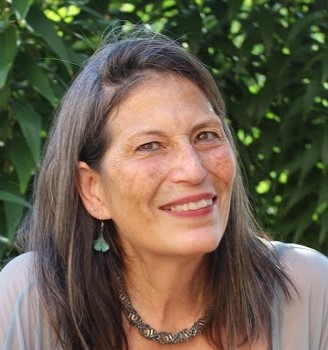Oklahoma Supreme Court Reverses Landmark Opioid Ruling
/By Pat Anson, PNN Editor
Oklahoma’s Supreme Court has reversed a landmark court ruling that found opioid drug makers created a public nuisance and were responsible for the state’s opioid crisis. It was the second major victory this month for the pharmaceutical industry, as it fights back against a tsunami of opioid litigation around the country.
The 5-1 decision by Oklahoma’s highest court throws out a $465 million verdict by Judge Thad Balkman against Johnson & Johnson. Former Oklahoma Attorney General Mike Hunter alleged that J&J and two other drug makers fueled the opioid crisis by flooding the state with painkillers. But the court said J&J can’t be held liable for the actions of others with legally prescribed opioids.
"We hold the opioid manufacturer's actions did not create a public nuisance. The district court erred in extending the public nuisance statute to the manufacturing, marketing, and selling of prescription opioids," the ruling states.
The decision is very similar to a ruling by a California judge last week, who said that J&J and three other drug makers can’t be held responsible for “adverse downstream consequences flowing from medically appropriate prescriptions.”
Like the California judge, Oklahoma’s high court acknowledged that an opioid epidemic exists and that it has caused the overdose deaths of thousands. While illicit use of prescription opioids led to many of those deaths, the court said few deaths occurred when individuals used opioids as prescribed.
“J&J had no control of its products through the multiple levels of distribution, including after it sold the opioids to distributors and wholesalers, which were then dispersed to pharmacies, hospitals, and physicians' offices, and then prescribed by doctors to patients. J&J also had no control over the laws and regulations that govern the disbursement of its prescription opioids or whether prescribers follow the laws,” the court said.
“We also cannot disregard that chronic pain affects millions of Americans. It is a persistent and costly health condition, and opioids are currently a vital treatment option for pain. The U.S. Food and Drug Administration has endorsed properly managed medical use of opioids (taken as prescribed) as safe, effective pain management, and rarely addictive.”
An Oklahoma patient advocate told PNN the court’s ruling was the “only logical outcome” because the state failed to prove its case.
“Their evidence never proved that bad marketing caused excess prescriptions nor the overdose crisis,” said Tamera Lynn Stewart, Policy Director for the P3 Political Action Alliance. “Looking at the totality of the evidence and data available from state and federal sources, it is clear that this crisis was always caused by attempts to fuel the drug war. If this use of public nuisance was allowed to stand, it would open up Pandora's box to future use against any company that produces a product for public use.”
Possible Impact on Other Cases
Plaintiff law firms representing state and local governments have filed over 3,000 lawsuits against drug makers, opioid distributors and pharmacies for their role in the opioid crisis. If successful, the law firms stand to make billions of dollars in contingency fees.
“Coming on the heels of a verdict in favor of opioid manufacturers in California, this news really casts significant doubt on similar cases that are still underway. I haven't read the ruling in this case yet, but the fact that the decision was 5-1, and that the lone dissenter agreed with the premise of the court's majority, but only wanted a different procedural outcome, means that the Oklahoma Supreme Court was not the least bit swayed by the state's case,” said Bob Twillman, PhD, former Executive Director of the Academy of Integrative Pain Management.
“It will be interesting to see if this court picked up on the same issues identified by the judge in California, namely, that the plaintiffs' presentation missed the mark with respect to an accurate and non-hyperbolic presentation of the facts. It's worth noting that much of the hyperbole came from ‘expert’ witnesses such as Andrew Kolodny.”
The state’s star witness in the Oklahoma trial was Kolodny, an addiction treatment specialist who founded Physicians for Responsible Opioid Prescribing (PROP), an anti-opioid activist group. Dr. Kolodny claimed that J&J and other drug makers operated an “opioid mafia” that funded patient groups and professional medical organizations that promoted the use of opioids.
“I don’t believe physicians should be helping drug companies market their products,” Kolodny testified in 2019. “It’s very easy to fool yourself when it’s profitable to fool yourself.”
Kolodny admitted under questioning that he was being paid $725 an hour to testify by the law firm of Nix Patterson & Roach and stood to make up to $500,000 for his services in Oklahoma. He also acknowledged that he was paid a similarly high hourly rate as a consultant for at least one other law firm involved in opioid litigation. Other PROP board members have also been paid witnesses in opioid litigation cases.
“It looks like the half-million dollars (or more) paid to him and to others is an indication of just how invested the plaintiffs are in the bill of goods they have been sold,” Twillman said in an email. “Meanwhile, while fully recognizing the toll taken by opioid use disorder, we need to keep reminding people of the harm caused by the pursuit of cases such as these -- the harm suffered by people with chronic pain who rely on opioid medications for pain relief, but whose access to those medications has been severely limited by the money-grab inherent in these cases. If there really is a public nuisance here, it may be that these cases are that nuisance.”
Purdue Pharma and Teva Pharmaceuticals settled out-of-court with Oklahoma before the case even went to trial, for $270 million and $85 million respectively. Several other drug companies have also settled out of court or are contemplating settlements rather than risk protracted and expensive litigation. The California and Oklahoma rulings are no doubt giving them second thoughts.
According to the CDC, the U.S. saw over 96,000 fatal overdoses in the 12 month period ending in March, 2021. Most of the deaths involve illicit fentanyl and other street drugs, not prescription opioids.














